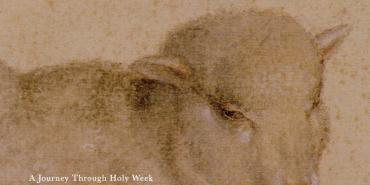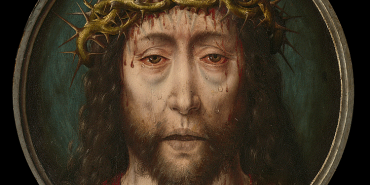Is There a Common Thread That Unites Us?

The Early Church fathers understood Jesus' prayer that "all of them may be one . . . that the world may believe that you have sent me" (John 17:21) would be fulfilled in "visible" unity for His Church. Any split was viewed as a grave breach against the Body of Christ. This belief essentially prevailed until the 11th century.
Today there are three major forms of the Church — Catholic, Orthodox, and Protestant — and hundreds of denominations globally within Protestantism. Today "visible" unity is a distant memory. We must accept the fact of diversity within the Church yet always be on the alert for opportunities to give expression to the unity for which our Lord prayed.
We readily acknowledge diversity within our own denomination. It is immediately obvious that 1.6 million members from more than 150 world areas representing many races, cultures, and languages bring a vast assortment of worldviews into the church. Our more than 16,000 local churches utilize many different strategies and methodologies, worship styles and music forms in mission accomplishment.
Though there is agreement in principle regarding our "Covenant of Christian Conduct," it may be enculturated differently in our multiple global contexts. All of these factors — and many others — foster diversity among us. But don't these differences have the potential to ultimately divide us?
Not if we have a salient core belief to which we mutually assent and about which we are passionate in proclamation and behavior.
And such a belief we have! The foreword of the Manual states our historical and current fundamental reason for being: "to advance God's Kingdom by the preservation and propagation of Christian holiness as set forth in the Scriptures." For almost a century now, this has been the common thread that has kept us united amid our increasing diversities.
Some are questioning whether that thread that has bonded us in the past still holds firm. Has it become worn and threadbare? Is it slowly, subtly unraveling? Or is it sufficiently strong to hold us together in the accomplishment of mission?
The Board of General Superintendents is poignantly aware of these issues. They recently refined our "primary objective" in a fresh way. Our mission is: "to make Christlike disciples in the nations." This statement declares that we are both a Great Commission church (to make disciples "in the nations") and a Holiness church ("to make Christlike disciples").
I am personally fond of the "Christlikeness" language in communicating holiness to a postmodern audience that supposedly rejects doctrine. This means that we must discover new and compelling ways to express biblical theology without compromising its truth.
Wesleyans acknowledge Christlikeness as the ultimate definition of the holy life. The intentional proclamation of the holiness message in this way may be a more winsome and effective method to transfer this liberating doctrine to this and coming generations.
While president at Point Loma Nazarene University, I discovered that students reacted adversely to any attempts to indoctrinate. However, they resonated warmly to messages about Jesus and the possibility of living like Him daily through the cleansing and enabling power and presence of the Holy Spirit. This is the biblical truth we believe and proclaim. It is the thread that unites us.
The message of Christlikeness must be authenticated in our lives, personally and corporately.
The local church is where "Christlike disciples" are developed. Here we believers are continually committing to hold each other accountable in love to live like Jesus in community. This is not an easy process because the church is comprised of very diverse people with strong opinions, personal idiosyncrasies, and different preferences in a variety of issues. This can bring painful disagreements into the church over such matters as worship styles, financial practices, and even doctrine.
Controversy and conflict occur in all entities, including the church. How this dissention is handled should distinguish a Christ-centered community.
We holiness people make a very high profession. If our testimony of Christlikeness in attitude and action does not work within the church, it will negate our witness in the streets and in our neighborhoods. Unbelievers often encounter hostility and quarreling in the home, neighborhood, or workplace. They do not expect it in the church — and rightly so!
Here is my formula for conflict resolution in the Church:
To help develop a Christlike community of faith is much more important than having my own way.
I cannot control the attitude that others bring to conflict but the Spirit can enable me to bring a loving, generous, and understanding spirit so that I can contribute positively to a Christ-honoring resolution to all potentially divisive issues.
To live in this spirit can bring unity to the church and fulfill God's highest purpose for us: we "are being transformed into his likeness with ever-increasing glory" (2 Corinthians 3:18).
Ultimately, Christlike living is designed by God for impact on those outside the church. We believers go out into a world that brings a blush to Sodom and Gomorrah without fear of being seduced. We are the seducers! In the power of the Divine Equipper we refrain from evil. We are moved inwardly by love, compassion, and justice.
In the Spirit of Jesus, we go around "doing good" to the disadvantaged and marginalized (Acts 10:38). We love our neighbors — and our enemies, too. We are agents of reconciliation. We share Good News with the lost and broken.
Why do we live like this? It is neither to win praise nor is it primarily to open the doors to evangelize. We do it because it is the Jesus way!
To live like Jesus in the power of the Spirit has been — and remains — the common thread that unites the people called Nazarenes.
Jim L. Bond is general superintendent emeritus in the Church of the Nazarene.
Holiness Today, May/June 2007
Please note: This article was originally published in 2007. All facts, figures, and titles were accurate to the best of our knowledge at that time but may have since changed.




